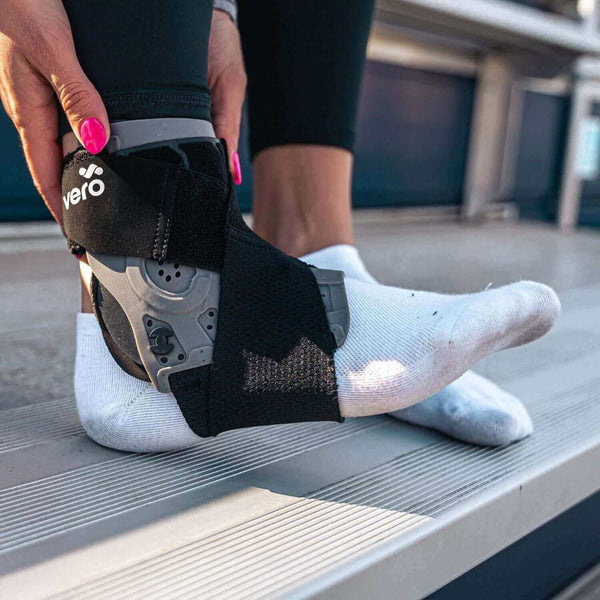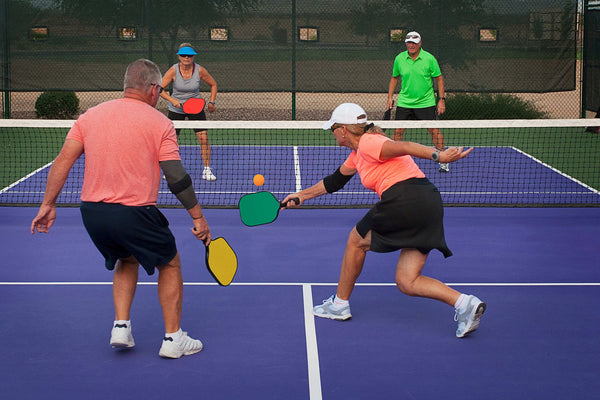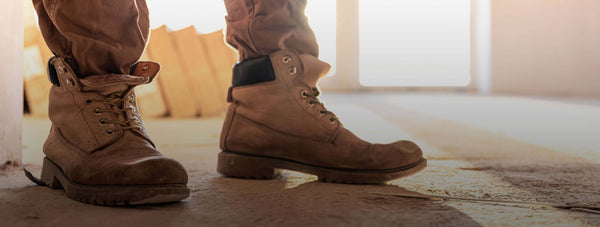by George Quill, MD, FAAOS
Pickleball injuries, especially ankle sprains, are becoming more common as the popularity of the game grows. Pickleball is now the fastest-growing sport in America for the third year in a row. According to the Association of Pickleball Professionals, there are 36.5 million pickleball players in the U.S.
Pickleball, a cross between ping pong, badminton, and tennis, does require a modicum of physical health and coordination, but is not difficult to learn, its court is smaller than a tennis court, the net is lower, and is played with a plastic wiffle ball. Additionally, participating in this social and accessible game, even into one’s later years, has been shown to provide numerous health benefits.
It is estimated that 25,000 Americans sprain their ankle every day. Thirty-three percent of the 19,000 pickleball injuries sustained in the U.S. every year are ankle sprains. The quick side-to-side movements of pickleball can place significant stress on the ligaments that hold your ankle joint in place. These twisted ankles are not always simple injuries and can result in residual symptoms in up to 40 percent of patients.
In more than 85 percent of ankle sprains, it is the lateral collateral ligaments (Anterior Talofibular Ligament and Calcaneofibular Ligament) that are effected. These ankle injuries are much more likely to re-sprain without the proper rehabilitation program and the use of a functional ankle brace.
The goal of ankle sprain treatment is to prevent chronic pain, instability, and on-going disability. Rehabilitation after ankle injury progresses through three well-documented phases and, depending upon the severity of the sprain, may take up to six to eight weeks for complete healing.
A comfortable, well-fitting ankle brace such as the Vero Ankle® brace that provides flexible support with the proper level of control and fits in a shoe can promote soft tissue healing and minimize atrophy of the calf musculature. Other types of ankle braces, such as lace-ups, taping, and rigid plastic ankle braces have not been shown to meet all these requirements.
The first phase of ankle sprain rehabilitation consists of rest, ice, crutches, and elevation. Ice can be applied to the acutely sprained ankle and contrast baths instituted during the first forty-eight hours after injury. Swelling and discomfort may be improved with the use of non-steroidal anti-inflammatory medication. It is important to use an ankle brace at this point to minimize the risk of re-injury while the soft tissues heal. As the patient’s acute symptoms subside, weight-bearing to tolerance in the Vero Ankle® brace is recommended.
When the athlete can bear weight without significant pain or swelling, the second phase of rehabilitation begins and includes protected exercise of the muscles that provide active ankle eversion and dorsiflexion. Cycling and brace-protected exercise of these muscles that help one avoid sprains in the future are instituted.
During phase three, usually occurring within 4 to 6 weeks after the acute ankle sprain, the patient can begin a program of functional conditioning while braced with proprioception, agility, and endurance training. Running in progressively smaller figures of eight is excellent for agility and improving peroneal strength. Using elastic bands for resisted eversion exercise is also helpful. Plantarflexion and jumping should be avoided at this point until strength is greatly improved.
The latter phases of ankle sprain rehabilitation include increasing peroneal eversion and active dorsiflexion strength and continue until the patient has full range of motion, normal strength, and no pain. When these three requirements are met, the ankle sprain patient may then return to pickleball and competitive athletics. It is recommended that the pickleball enthusiast continue to use his functional Vero Ankle® brace for the entire next season to help prevent recurrent injury. One of the major advantages of the Vero Ankle® brace is that it fits quite comfortably in a regular court shoe. The brace should be worn indefinitely in the athlete with residual instability not requiring surgery for ligament reconstruction.
In summary, while ankle sprains are very common injuries in pickleball, appropriate functional rehabilitation and the use of a flexible, well-fitting and supportive ankle brace such as the Vero Ankle® brace can provide excellent results with the ability to keep on pickling for years to come.
Sources:
American Academy of Orthopedic Surgeons Position Statement on the Role of Preventive, Rehabilitative, and Functional bracing. www.aaos.org
Association of Pickleball Professionals, 2023
Medicine and Science in Sports and Exercise, 2016
Snider, Robert K., editor: Essentials in Musculoskeletal Care, American Academy of Orthopedic Surgeons, American Academy of Pediatrics, pages 390-393, 1997.
“Sports Participation in America,” Sports and Fitness Industry Association, 2023





















